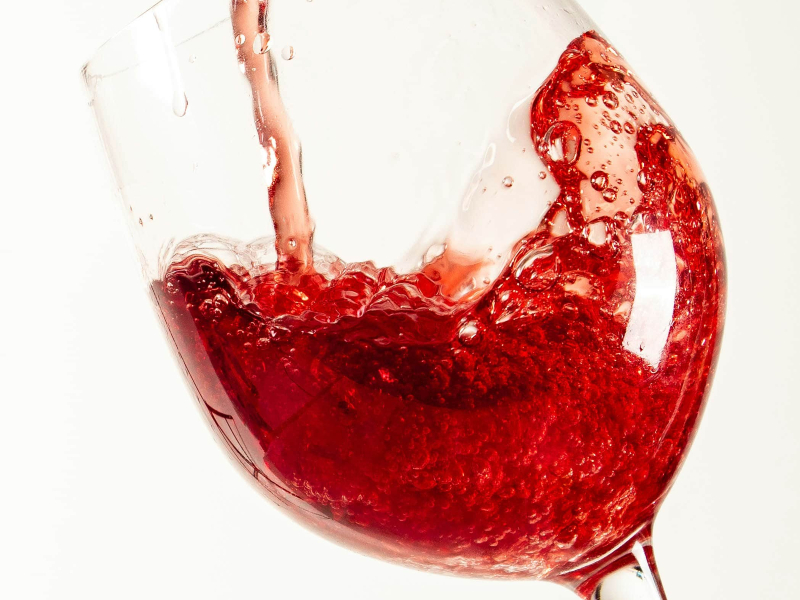The story of Argentine Merlot is a tale of resilience and sophistication. Although it has been out of the limelight in recent decades, for years the grape has been a local classic and still holds a special place in the annals of Argentine viticulture.
The ups and downs of Argentine Merlot
Merlot, originally from Bordeaux, France, is one of the most prestigious varieties in the world, used in iconic wines such as Petrus and the reds of Saint-Émilion. Merlot has been grown in Argentina for over a century and its wines have often been a local favorite on their own as well as being a key ingredient in local Bordeaux blends.
In the 1990s, the grape’s boom spread to Argentina and a lot of wineries invested in Merlot, which seemed to be a rising star. However, in 2004, the film Sideways negatively affected its reputation, especially in the USA, reducing demand and encouraging many producers to replace it with more popular varieties.
Although its surface area has gone down by 30% over the last decade, Argentine Merlot still boasts 4610 hectares under vine from the north down to Patagonia, delighting wine lovers and winemakers who know how to appreciate its elegant character.
The unique characteristics of Argentine Merlot

In Argentina, Merlot continues to be grown and made into wine with great care and dedication. The country’s terroirs are ideal for its development, especially the high altitude regions in Mendoza, Salta, and Patagonia.
The grape, which has a medium-length ripening cycle, adapts well to the mild temperatures of these regions and shines in gravel and clay soils as well as the rockier ones found in mountain vineyards.
For wine lovers looking for something different, Argentine Merlot offers an alternative that is worth exploring. With their medium structure, natural freshness and refined aromatic profile, these wines express a profound connection with their landscapes and reflect the spirit of Argentine viticulture in its most delicate and complex guise.
Merlot, from north to south

One distinctive characteristic about the Argentine wine regions is their range of terroirs, which present unique conditions for cultivation. This means that the same varietal can have quite different flavors depending on the place where it came from. In the case of Merlot, it is important to note that it is grown mostly in areas with a continental climate, which makes a big difference compared to grapes grown elsewhere. Of course, the height of vineyards is another significant factor. Below, we offer a guide to the kinds of Merlot produced in the leading terroirs of Argentina.
In the Northwest, for example, Merlot is grown mainly in the Calchaquí Valleys, at heights of between 5600 and 8500 feet. Notable extremely high altitude wines can be found in Cafayate and Cachi, with the altitude cooling the otherwise warm climate, lending tart freshness to the wines while the abundant sunlight ensures power and character. Good examples of these phenomena are Adentro and Miraluna, both from Cachi, which deliver spicy, fruity aromas and are opulent and vibrant in the mouth. In Cafayate, meanwhile, Domingo Molina produce a substantial style with dark fruit, mineral hints and a fleshy palate. Finally, in Chañarpunco, El Esteco Fincas Notables is earthy, fruity and floral with a velvety palate.
As one might expect, Mendoza is home to the largest amount of Merlot in Argentina, boasting 79,1% (3530 hectares) of all the vines in the country, with Luján de Cuyo, the Uco Valley and San Rafael producing some of the best examples. The longest association with the grape is undoubtedly that of San Rafael, to the south of the province, where the cool climate and old vines help produce wines such as Bianchi Particular, a much sought after classic for Merlot lovers.

Notable exponents from Luján de Cuyo include Bressia Del Alma Merlot, which is one of the most sophisticated and elegant Merlots in Argentina with a fluid, expansive style that can also be found in Finca La Anita Blend de Merlot, an unusual wine that blends together excellent vintages.
In the Uco Valley, Merlot ripens very well with rich color, a natural, refreshing acidity and great aromatic complexity. Three essential labels include: Piattelli Limited Edition from Los Chacayes, whose good structure is thanks to calcareous tannins, Achával Ferrer Singular Diamante, which hails from the heights of Gualtallary and offers plenty of vigor and freshness, and Catalpa Merlot from Atamisque, a delicious red from Tupungato with subtle floral and fruity hints that dominate the palate.
Patagonia is another ideal terroir for Merlot, where the grape is a specialty across several of its sub-regions. Here, the warm climate and clay soils provide the ideal habitat for the grape, mainly in the vineyards of the Río Negro Valley, where you’ll find a wealth of century-old vines that produce wines of great balance such as Humberto Canale Gran Reserva, Riccitelli Old Vines and Infinitus Gran Reserva, all of which deliver a lovely fruity character, good balance and persistent red fruit flavors. Meanwhile, you’ll also find lighter, gentler versions such as Miras Joven Merlot.
As regards the Merlots of Neuquén, producers are generally opting for a modern, potent style defined by the sunny, steppe terroir. Some qualities these wines have in common are the aromas of ripe sweet and sour cherry with hints of blackcurrant and a juicy palate, as you’ll find in Del Fin del Mundo Reserva, Saurus Select from Familia Schroeder and Malma Reserva de Familia.
Finally, the Province of Chubut, in Extreme Patagonia has demonstrated great potential for Merlot in the Capitán Sarmiento area, where Otronia 45 Rugientes Merlot is made, a wine that defies a difficult climate with a delicate expression, free-flowing red and dark fruit and intense mineral notes.
As you can see, regardless of the highs and lows experienced by Merlot across the world, Argentina is still producing some great versions with a resurgent identity and distinctive style that will be sure to win back anyone who appreciates sophistication and authenticity in their glass.



